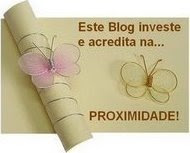Judith told me that since her grandchildren were toddlers, she would spread out the family photos and go over their names. They soon recognized their ancestors and relatives.
Marlene Bishow of the JGS of Greater Washington (DC), hosting this year's 31st IAJGS International Conference on Jewish Genealogy, shared that her grandmother went over index cards with family information with Marlene.
These were grass-roots, personal efforts, and now there's an even easier way to encourage children and involve adults in learning who's who in your family - a true multi-generational effort in the form of a family memory game created by MyHeritage.com for its members.
MyHeritage.com has just created a family memory game - a set of family photo cards personalized for your own family - and that can be played like other matching picture games. Anyone can match the two chickens or two shapes, but can you match the cards for Great-Aunt Rose or Great-Grandfather Aaron?
It can be played for free online or card sets may be ordered to use at home - and they'd make great gifts.
Tracing the Tribe thinks this new game and the card sets will be a great hit with genealogists who are always looking for ways to get their families involved in their quest.
According to the press release,
The game, one of the first ever online family tree games, automatically generates beautiful personalized picture cards of close relatives and ancestors - based on each user’s family tree. Following the same rules as a typical memory card game, users can play online against other family members, or solo against the clock. With a webcam option, players can even include a live picture of themselves in one pair of the cards – providing added entertainment particularly for younger players.

If you are already a member and enjoy the online version, order the printed cards, compiled from information already in your family tree, from MyHeritage.com to play at home, to take along on vacations or to family reunions. The card sets are available through the company's new partnership with AncestryGames.com.The game, one of the first ever online family tree games, automatically generates beautiful personalized picture cards of close relatives and ancestors - based on each user’s family tree. Following the same rules as a typical memory card game, users can play online against other family members, or solo against the clock. With a webcam option, players can even include a live picture of themselves in one pair of the cards – providing added entertainment particularly for younger players.
The game is recommended for all users with a family tree that features photos of relatives. Click here to view an image of the game.
Each deck of 60 handmade personalized cards features up to 30 relatives of the user's choice and includes birth/death dates and locations as listed in the family tree. Each deck (up to three sets) ordered costs $20 each (plus shipping; US $7, international $16). That shipping charge covers up to three decks.
For more information, see the press release link above or go the MyHeritage blog post.

































